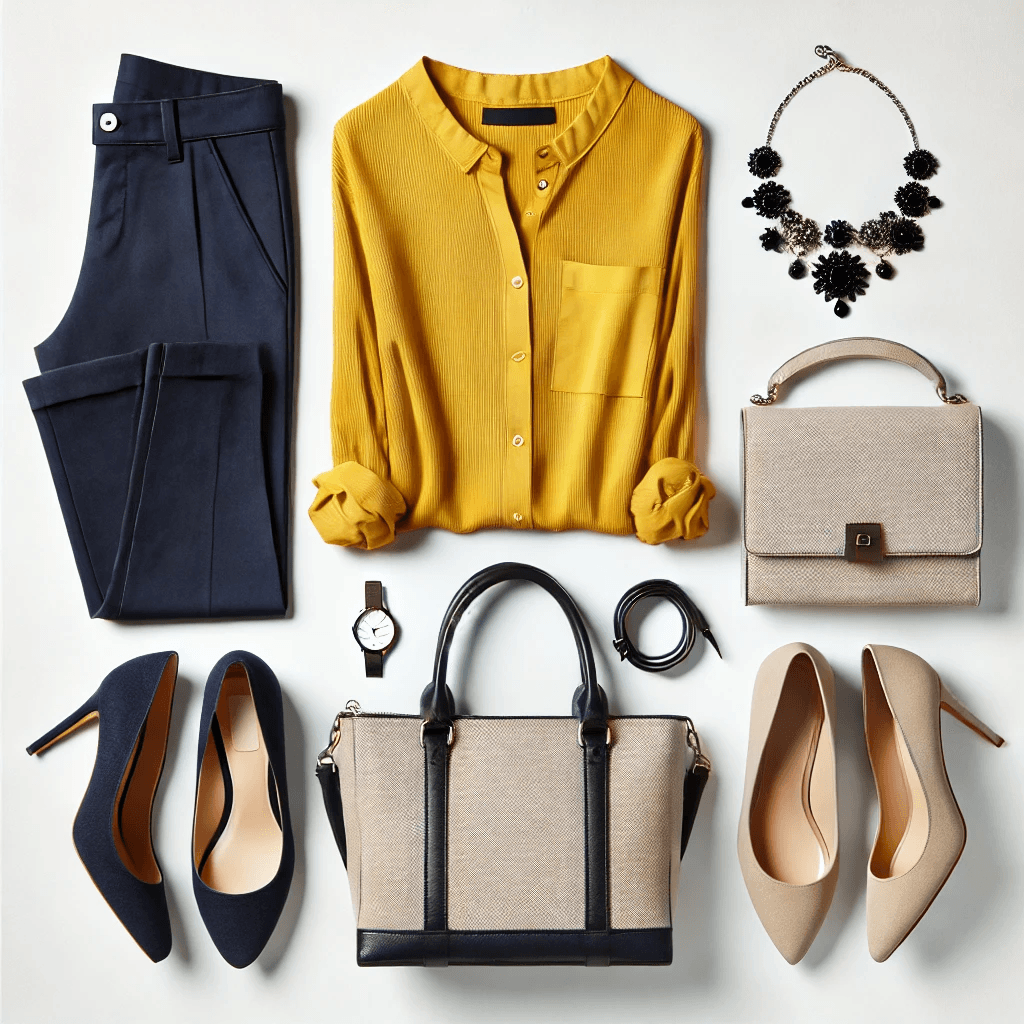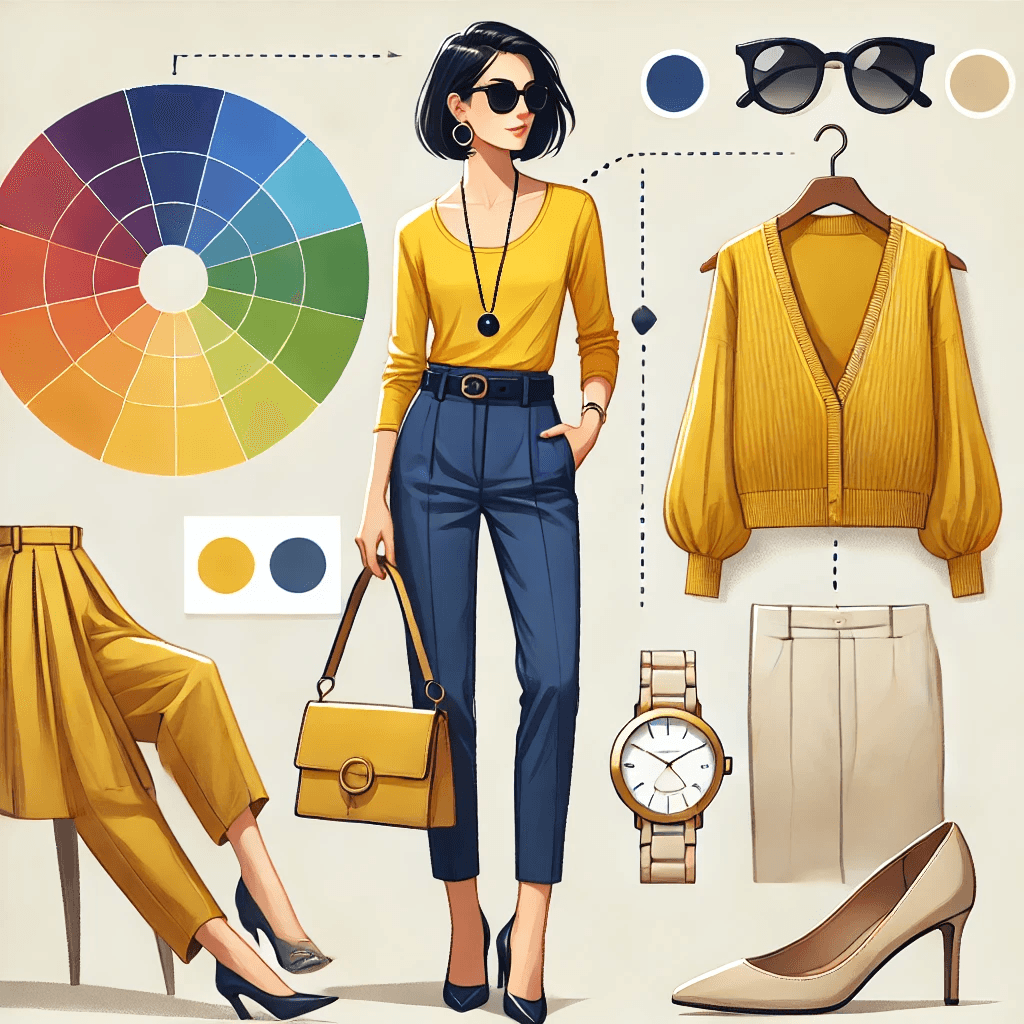Choosing the right colors for your outfit can make a big difference in how you look and feel. Mixing and matching colors may seem tricky at first, but understanding some simple rules can help you create stylish looks.
This article will teach you the basics of color theory, tips for matching colors, and ideas for dressing for different occasions. You’ll also learn common mistakes to avoid and tools to make outfit planning easier. Whether you’re dressing for work, a party, or a casual day out, these tips will help you use colors in the best way possible.
Understanding the Basics of Color Theory
Color theory is the foundation for creating great outfits. It explains how colors interact and how you can combine them effectively. By understanding the color wheel, you’ll see how primary colors (red, yellow, blue) mix to create secondary and tertiary colors. Warm colors like red and orange bring energy, while cool tones like blue and green feel calming. Using complementary colors, such as blue and orange, creates contrast, while analogous colors like blue and green provide harmony. A monochromatic scheme, using different shades of the same color, keeps things sleek and cohesive.
Primary, Secondary, and Tertiary Colors
The color wheel is a useful tool for creating outfits. It shows how colors relate to each other. Primary colors—red, yellow, and blue—are the base. Secondary colors, like orange, green, and purple, are made by mixing two primary colors. Tertiary colors are created by combining a primary and a secondary color, like red-orange or blue-green.
Warm vs. Cool Colors
Colors are categorized as warm or cool, each creating different moods.
Warm Colors: Red, orange, and yellow.
- These colors evoke energy, warmth, and cheerfulness.
Cool Colors: Blue, green, and purple.
- These colors create a calm, soothing, and relaxed vibe.
When planning your outfit, decide the mood you want to create. A warm-toned outfit is great for a lively event, while cool colors work well for a soothing or professional appearance.
Complementary, Analogous, and Monochromatic Schemes
Complementary colors are opposite on the color wheel, like blue and orange. They create contrast and make outfits pop. Analogous colors, like blue and green, are next to each other and offer harmony.
A monochromatic scheme uses shades of one color, like light blue, navy, and sky blue. This creates a sleek, minimal look. Try experimenting with these schemes to find what works for you.
Tips for Mixing and Matching Colors
Mixing and matching colors can transform your outfits into stylish and balanced looks. Start by using neutral colors like white, black, or beige as a base to anchor brighter shades. Incorporate one bold statement piece, such as a colorful top or patterned skirt, and keep the rest of the outfit simple.
Neutral Colors as Anchors
Neutral colors—white, black, gray, and beige—are great for balancing bold shades. They help your outfit look polished and not too overwhelming.
For example, pair a bright red dress with nude shoes and a beige handbag. This keeps the focus on the dress without creating too much contrast. Neutrals are also perfect for layering pieces like jackets or scarves.
Playing with Statement Pieces
A statement piece is a bold item that stands out. It could be a colorful top, a patterned skirt, or bright shoes. When wearing a statement piece, keep the rest of your outfit simple.
For instance, pair a bright yellow blouse with black pants and neutral shoes. This way, the blouse becomes the focal point without clashing with other colors.
Balancing Bold Colors
The 60-30-10 rule helps balance colors. Use 60% of one color (like a dress), 30% of another (shoes or a jacket), and 10% of an accent (a scarf or earrings).
Dressing for Different Occasions
Choosing the right colors for each occasion ensures your outfit fits the mood and setting. For casual wear, add pops of color to relaxed basics, like pairing jeans with a bright top or colorful sneakers. In office settings, stick to neutral tones like navy or gray, adding a subtle splash of color with accessories such as a scarf or tie.
Casual and Everyday Wear

Casual outfits are great for experimenting with pops of color. Pair jeans with a bright top or colorful sneakers.
For a relaxed look, stick to soft colors like pastel pinks or blues. These add personality without being too bold.
Office and Formal Wear
Neutral tones, like gray or navy, are ideal for office outfits. Add a touch of color with accessories like a scarf, tie, or jewelry.
Keep your look professional by avoiding overly bright shades. Instead, use muted colors like olive green or burgundy.
Evening and Party Outfits
For parties, jewel tones like emerald green or sapphire blue work well. Metallic shades like gold or silver add glamour.
Common Mistakes to Avoid When Mixing Colors
While mixing colors can elevate your style, there are common pitfalls to watch out for. Avoid overloading your outfit with too many bright colors, as it can look overwhelming—stick to one or two bold shades balanced with neutrals. Another mistake is ignoring your skin tone and undertones; certain colors might clash with your natural complexion.
Overloading Bright Colors:
- Wearing too many bright colors in one outfit can feel overwhelming.
- Stick to one or two bold shades and balance them with neutrals.
Ignoring Skin Tone and Undertones:
- Your skin tone influences how colors appear on you.
- Warm undertones pair well with earthy colors like mustard or olive.
- Cool undertones match jewel tones like emerald or sapphire.
- Knowing your undertone helps you select colors that complement your natural look.
Forgetting Seasonal Relevance:
- Certain colors are better suited for specific seasons.
- Bright yellows and greens work well in summer, while deep reds and browns are ideal for fall.
- Matching your outfit’s colors to the season keeps your style fresh and appropriate.
Practical Tools and Resources
Using tools and resources can make mixing colors easier and more fun. A color wheel is a great starting point for understanding which colors complement or harmonize with each other. Online styling apps, like Stylebook or Cladwell, help you plan outfits and visualize color combinations. You can also draw inspiration from fashion icons and influencers who creatively mix colors in their looks. These resources will guide you in creating balanced and stylish outfits effortlessly.
Using a Color Wheel
A color wheel helps you see how colors work together. Use it to find complementary, analogous, or monochromatic combinations for your outfits.
Online Styling Apps
Apps like Stylebook or Cladwell can help you plan outfits and mix colors. They also let you organize your wardrobe for easier styling.
Learning from Fashion Icons
Fashion icons often mix colors creatively. Look at their outfits for inspiration. Try replicating their use of complementary or bold color schemes.
Conclusion
Mixing and matching colors can transform your outfits and boost your confidence. Start with the basics of color theory and use neutral shades to balance bold colors. Pay attention to the occasion and avoid common mistakes like overloading colors or ignoring undertones.




